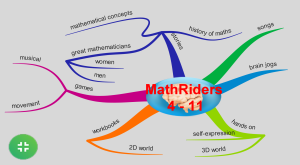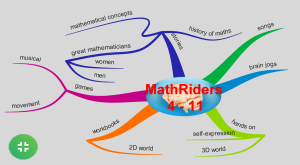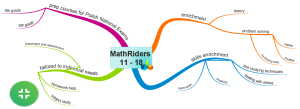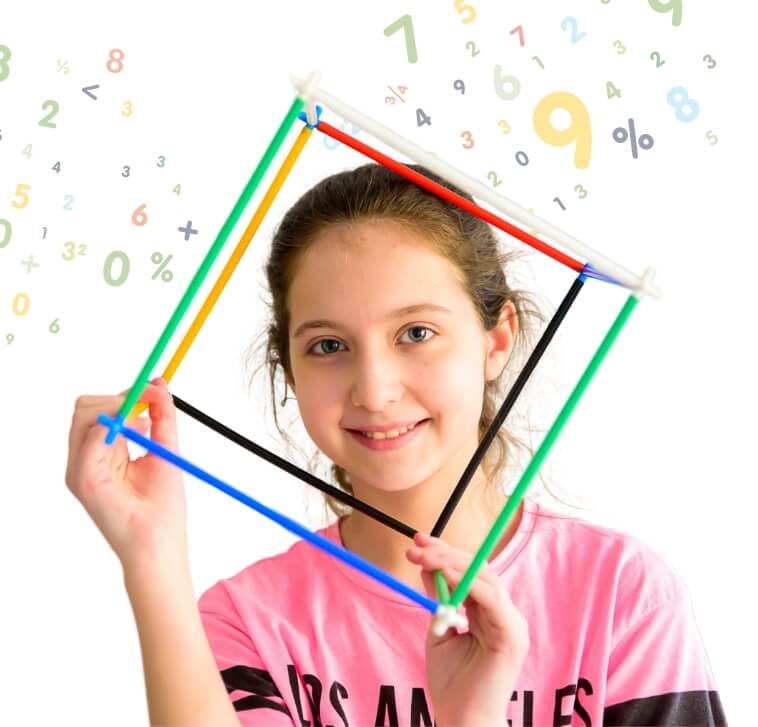Mind map explanation
The Mind Map is a tool invented by Tony Buzan for consolidating ideas and how the brain builds and connects them. Even Leonardo Da Vinci used mapping to chart his ideas! This MathRiders Junior Mind Map gives a holistic view of the elements that make up an actual MathRiders lesson.
Brain jogs (all ages)
Brain Jogs are quick and fun energizing activities that prepare a learner for thinking and coordination skills. Each activity uses movements that cross the midline and connects both brain hemispheres. When the brain hemispheres are connected, the student is able to use right brain creativity and left brain logic simultaneously. It is being proven more and more that an approach which integrates these two different activities of the brain leads to far more effective learning. Brain Jogs bring movement and learning together.
Musical activities: (younger ages)
The children do fun mathematical activities with percussion instruments in order to strengthen mental arithmetic abilities, inventive thinking and group dynamics, as well as non-verbal individual participation.
Hands on: (all ages)
Learning is dynamic for MathRiders Junior students. Students explore and investigate maths through age and developmentally appropriate hands-on activities and games. These include, interlocking cubes, measuring each other’s height using a non-conventional standard of measure (bricks, books or other objects) building a clock, colouring, comparing items, and many different ways to see mathematics in action. Once the hands-on activity has been done, it is time to express it in mathematical terms.
Self-expression: (all ages)
The child expresses himself as an individual as well as part of a group. During the core part of the lesson in which the child examines mathematical problems in a concrete, hands-on manner, he is encouraged to verbally express what he has discovered and to improve his manner of expression. His views and thoughts are respected and thus help build his self-esteem, legitimize his thoughts and strengthen his belief in himself. This, in turn, increases his motivational level, which, in turn, generates success. He verbally expresses the hands-on mathematical activity the group has just done, and together with the teacher, he and the group learn to transform this to ‘real world’ activity into a mathematical exercise on paper.
Written activities: (all ages)
All students, from Levels 1 through 6 have written workbook activities that mirror the lesson activity. The children work in unique workbooks in order to establish and strengthen their abilities and understanding of the numerals as opposed to verbal/mental arithmetic. The teacher is able to confirm that lessons and concepts are absorbed by each student. These written activities balance the lesson; in combining written activities with movement and play, knowledge is retained longer and students successfully learn maths. As the levels progress, students are challenged and receive lots of positive reinforcement to succeed.
Songs and stories
In levels 1 and 2, lessons contain songs relating to counting to help the child remember the basics of maths. Lessons for Levels 1 – 4 often end with a story that: depicts the life of a great mathematician, tells an aspect of the history of maths, or relates to mathematical concepts.
In this way, the child connects to the emotional side of the subject and is able to reflect on yet another facet of the world of mathematics.
Mind map explanation
The Mind Map is a tool invented by Tony Buzan for consolidating ideas and how the brain builds and connects them. Even Leonardo Da Vinci used mapping to chart his ideas! This MathRiders Junior Mind Map gives a holistic view of the elements that make up an actual MathRiders lesson.
Brain jogs (all ages)
Brain Jogs are quick and fun energizing activities that prepare a learner for thinking and coordination skills. Each activity uses movements that cross the midline and connects both brain hemispheres. When the brain hemispheres are connected, the student is able to use right brain creativity and left brain logic simultaneously. It is being proven more and more that an approach which integrates these two different activities of the brain leads to far more effective learning. Brain Jogs bring movement and learning together.
Musical activities: (younger ages)
The children do fun mathematical activities with percussion instruments in order to strengthen mental arithmetic abilities, inventive thinking and group dynamics, as well as non-verbal individual participation.
Hands on: (all ages)
Learning is dynamic for MathRiders Junior students. Students explore and investigate maths through age and developmentally appropriate hands-on activities and games. These include, interlocking cubes, measuring each other’s height using a non-conventional standard of measure (bricks, books or other objects) building a clock, colouring, comparing items, and many different ways to see mathematics in action. Once the hands-on activity has been done, it is time to express it in mathematical terms.
Self-expression: (all ages)
The child expresses himself as an individual as well as part of a group. During the core part of the lesson in which the child examines mathematical problems in a concrete, hands-on manner, he is encouraged to verbally express what he has discovered and to improve his manner of expression. His views and thoughts are respected and thus help build his self-esteem, legitimize his thoughts and strengthen his belief in himself. This, in turn, increases his motivational level, which, in turn, generates success. He verbally expresses the hands-on mathematical activity the group has just done, and together with the teacher, he and the group learn to transform this to ‘real world’ activity into a mathematical exercise on paper.
Written activities: (all ages)
All students, from Levels 1 through 6 have written workbook activities that mirror the lesson activity. The children work in unique workbooks in order to establish and strengthen their abilities and understanding of the numerals as opposed to verbal/mental arithmetic. The teacher is able to confirm that lessons and concepts are absorbed by each student. These written activities balance the lesson; in combining written activities with movement and play, knowledge is retained longer and students successfully learn maths. As the levels progress, students are challenged and receive lots of positive reinforcement to succeed.
Songs and stories
In levels 1 and 2, lessons contain songs relating to counting to help the child remember the basics of maths. Lessons for Levels 1 – 4 often end with a story that: depicts the life of a great mathematician, tells an aspect of the history of maths, or relates to mathematical concepts.
In this way, the child connects to the emotional side of the subject and is able to reflect on yet another facet of the world of mathematics.
Mind map explanation
The Mind Map is a tool invented by Tony Buzan for consolidating ideas and how the brain builds and connects them. Even Leonardo Da Vinci used mapping to chart his ideas! This MathRiders Junior Mind Map gives a holistic view of the elements that make up an actual MathRiders lesson.
Brain jogs
Brain Jogs are quick and fun energizing activities that prepare a learner for thinking and coordination skills. Each activity uses movements that cross the midline and connects both brain hemispheres. When the brain hemispheres are connected, the student is able to use right brain creativity and left brain logic simultaneously. It is being proven more and more that an approach which integrates these two different activities of the brain leads to far more effective learning. Brain Jogs bring movement and learning together.
Musical activities: (younger ages)
The children do fun mathematical activities with percussion instruments in order to strengthen mental arithmetic abilities, inventive thinking and group dynamics, as well as non-verbal individual participation.
Hands on: (all ages)
Learning is dynamic for MathRiders Junior students. Students explore and investigate maths through age and developmentally appropriate hands-on activities and games. These include, interlocking cubes, measuring each other’s height using a non-conventional standard of measure (bricks, books or other objects) building a clock, colouring, comparing items, and many different ways to see mathematics in action. Once the hands-on activity has been done, it is time to express it in mathematical terms.
Self-expression: (all ages)
The child expresses himself as an individual as well as part of a group. During the core part of the lesson in which the child examines mathematical problems in a concrete, hands-on manner, he is encouraged to verbally express what he has discovered and to improve his manner of expression. His views and thoughts are respected and thus help build his self-esteem, legitimize his thoughts and strengthen his belief in himself. This, in turn, increases his motivational level, which, in turn, generates success. He verbally expresses the hands-on mathematical activity the group has just done, and together with the teacher, he and the group learn to transform this to ‘real world’ activity into a mathematical exercise on paper.
Written activities: (all ages)
All students, from Levels 1 through 6 have written workbook activities that mirror the lesson activity. The children work in unique workbooks in order to establish and strengthen their abilities and understanding of the numerals as opposed to verbal/mental arithmetic. The teacher is able to confirm that lessons and concepts are absorbed by each student. These written activities balance the lesson; in combining written activities with movement and play, knowledge is retained longer and students successfully learn maths. As the levels progress, students are challenged and receive lots of positive reinforcement to succeed.
Songs and stories
For Starter students as well as those In levels 1 and 2, lessons contain songs relating to counting to help the child remember the basics of maths. Lessons for Levels 1 – 4 often end with a story that depicts the life of a great mathematician, tells an aspect of the history of maths, or relates to mathematical concepts.
In this way, the child connects to the emotional side of the subject and is able to reflect on yet another facet of the world of mathematics.
Mind map explanation
The Mind Map is a tool invented by Tony Buzan for consolidating ideas and how the brain builds and connects them. Even Leonardo Da Vinci used mapping to chart his ideas! This MathRiders Junior Mind Map gives a holistic view of the elements that make up an actual MathRiders lesson.
Brain jogs (all ages)
Brain Jogs are quick and fun energizing activities that prepare a learner for thinking and coordination skills. Each activity uses movements that cross the midline and connects both brain hemispheres. When the brain hemispheres are connected, the student is able to use right brain creativity and left brain logic simultaneously. It is being proven more and more that an approach which integrates these two different activities of the brain leads to far more effective learning. Brain Jogs bring movement and learning together.
Musical activities: (younger ages)
The children do fun mathematical activities with percussion instruments in order to strengthen mental arithmetic abilities, inventive thinking and group dynamics, as well as non-verbal individual participation.
Hands on: (all ages)
Learning is dynamic for MathRiders Junior students. Students explore and investigate maths through age and developmentally appropriate hands-on activities and games. These include, interlocking cubes, measuring each other’s height using a non-conventional standard of measure (bricks, books or other objects) building a clock, colouring, comparing items, and many different ways to see mathematics in action. Once the hands-on activity has been done, it is time to express it in mathematical terms.
Self-expression: (all ages)
The child expresses himself as an individual as well as part of a group. During the core part of the lesson in which the child examines mathematical problems in a concrete, hands-on manner, he is encouraged to verbally express what he has discovered and to improve his manner of expression. His views and thoughts are respected and thus help build his self-esteem, legitimize his thoughts and strengthen his belief in himself. This, in turn, increases his motivational level, which, in turn, generates success. He verbally expresses the hands-on mathematical activity the group has just done, and together with the teacher, he and the group learn to transform this to ‘real world’ activity into a mathematical exercise on paper.
Written activities: (all ages)
All students, from Levels 1 through 6 have written workbook activities that mirror the lesson activity. The children work in unique workbooks in order to establish and strengthen their abilities and understanding of the numerals as opposed to verbal/mental arithmetic. The teacher is able to confirm that lessons and concepts are absorbed by each student. These written activities balance the lesson; in combining written activities with movement and play, knowledge is retained longer and students successfully learn maths. As the levels progress, students are challenged and receive lots of positive reinforcement to succeed.
Songs and stories
In levels 1 and 2, lessons contain songs relating to counting to help the child remember the basics of maths. Lessons for Levels 1 – 4 often end with a story that: depicts the life of a great mathematician, tells an aspect of the history of maths, or relates to mathematical concepts.
In this way, the child connects to the emotional side of the subject and is able to reflect on yet another facet of the world of mathematics.

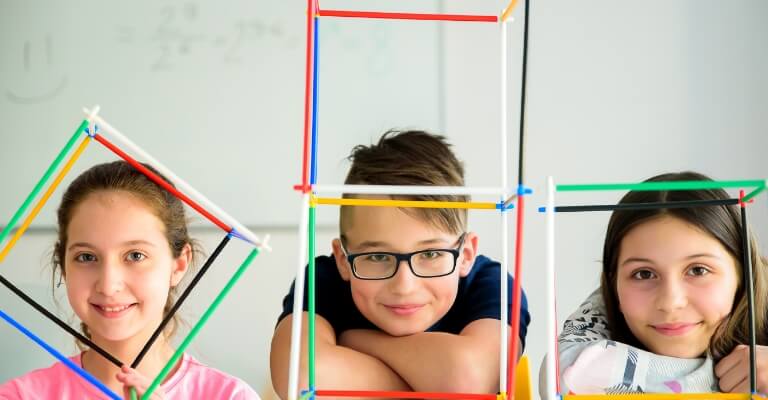

Години 5-11
Изграждане на силни математически основи
Младите ученици на MathRiders разпознават и прилагат математиката в ситуации от реалния живот с лекота и увереност. Чрез ефективна и забавна учебна програма, която включва игри, музика, песни и истории, MathRiders помага за изграждането на силна математическа основа, умения за разсъждение и решаване на проблеми.
Практически опит от учене, превръщащ се в математически концепции
Предоставяме възможност и насърчение за докосване, движение, изследване и като цяло за игра с различни материали, свързани с математиката и числеността. Разбирането на математическите понятия идва естествено от личен опит и експериментиране: от броене с пръсти до хвърляне на зарове и от броене до определяне на вероятността за събитие. Този начин на изучаване на математиката позволява на децата да бъдат изложени на концепции естествено и с по-бързо темпо.
Музикални дейности
Свиренето с ударни инструменти активира усещането на детето за звук и ритъм, което помага за разбирането на основни понятия и решаването на математически задачи. Например чрез песента Five Little Frogs (Пет жабчета) децата могат да се запознаят с редовото броене, моделите, последователността и предсказването на ако/тогава.
Мозъчни тренировки
Базирана на изследователски проучвания и разработена от съвместен екип от математици и преподаватели, нашата уникална методология използва кръстосани движения на тялото за изграждане на връзки между мозъчните полукълба, което укрепва умствените аритметични способности, изобретателното мислене и е доказано, че помага за решаването на математически задачи.
Комуникация и лидерство
Ефективното съчетаване на индивидуални учебни задачи с групови дейности насърчава учениците да изразяват себе си, подобряват уменията си за разсъждение, развиват критично мислене, както и възприемчивост и толерантност към чуждото мнение.
Предимства за вашето дете
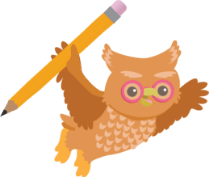

Широки основи и задълбочено разбиране на математическите дисциплини

Увереност при намирането и използването на символни и логически структури

Оптимален баланс между практикуването на математически техники и тяхното практическо приложение

Оптимален баланс между практикуването на математически техники и тяхното практическо приложение

Силна способност за извличане и организиране на данни в различни форми на представяне за ефективна обработка

Силна способност за извличане и организиране на данни в различни форми на представяне за ефективна обработка

Усъвършенствано пространствено мислене и прилагането му за решаване на задачи

Цялостно развитие на социални компетенции и лидерство
Научени математически концепции
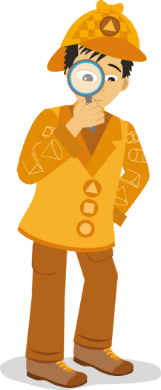
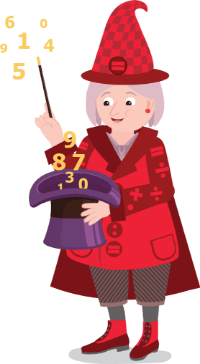
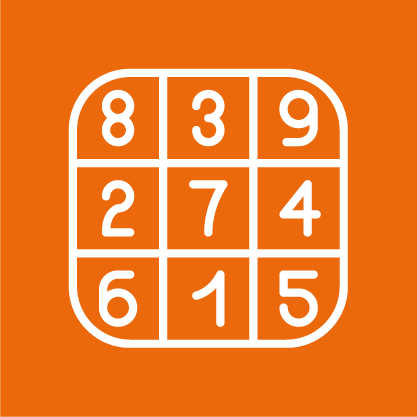
Числа и операции
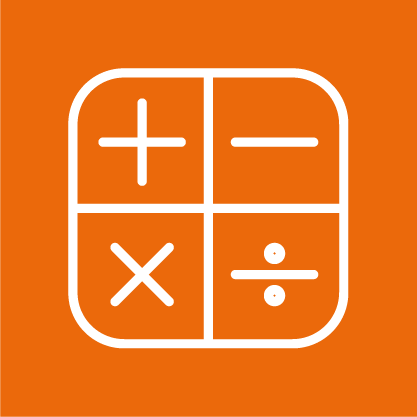
Предварителна алгебра
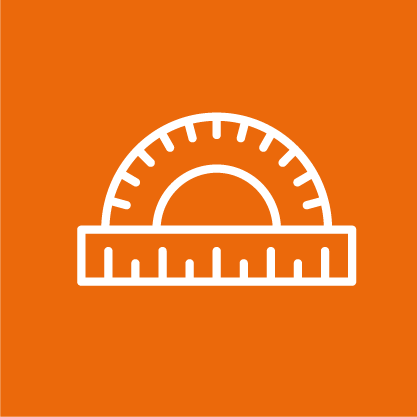
Измерване
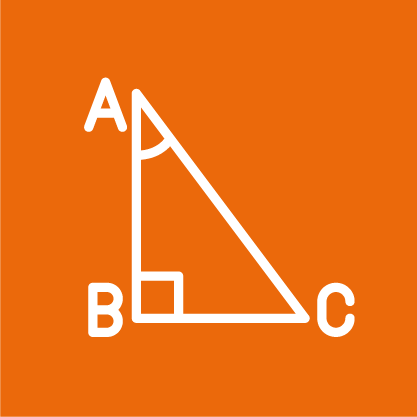
Геометрия
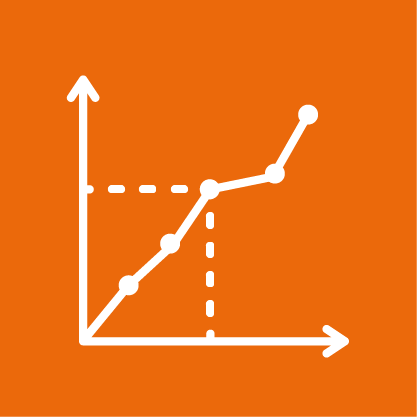
Анализ на данни
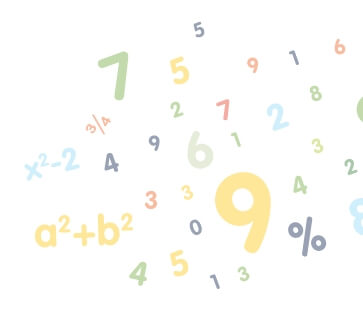
Курсове
Ниво 1
5 до 6 Години
Играли ли сте някога математика? Пели ли сте някога математика? Вкусвали ли сте някога математика? Учениците от MathRiders отговарят с ДА! Защото те се учат да броят напред и назад чрез пеене, да подреждат и сортират – да играят със зарчета, домино и да създават диаграми, докато… ядат плодове. Ето как се учи по естествен начин!
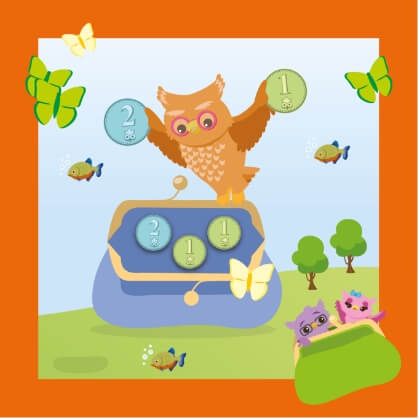
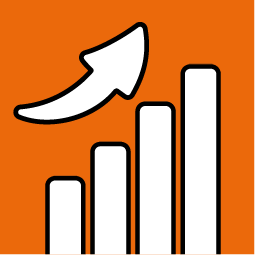
Ниво
Детска градина
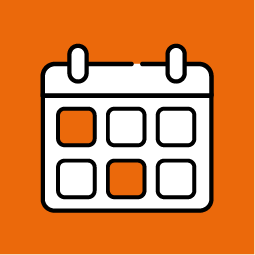
Брой уроци
32 урока
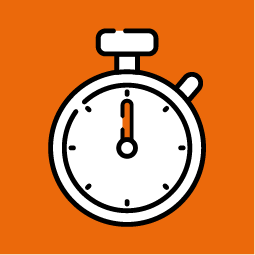
Продължителност на урок
50-60 минути
Учебни материали
Раница
4 Работни тетрадки
Helen Doron Stream
Теми
- Броене, подреждане, сравняване и писане на числата до 20, нечетни и четни числа
- Събиране и изваждане до 20
- Измерване на дължина и тегло, решаване на текстови задачи за време и пари
- Разпознаване на 2D и 3D форми в реални обекти
- Сортиране на обекти в категории въз основа на техните атрибути
- и още…
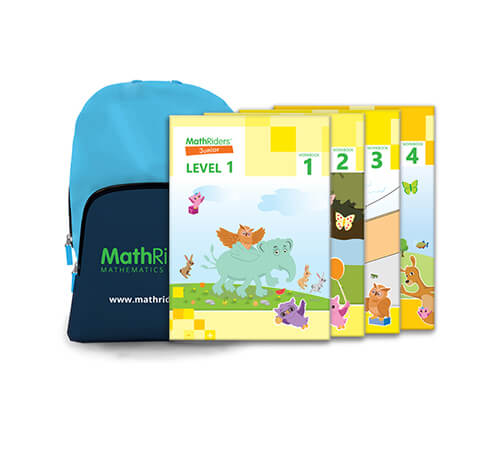
Учебни материали
Раница
4 Работни тетрадки
Helen Doron Stream

Ниво 2
6 до 7 Години
В MathRiders вярваме, че математиката не е изкуството да се смята, а изкуството да се мисли! Совата Оли, главният герой и водач на MathRiders, представя основните области на математиката на малките мислители и ги подкрепя, докато придобиват основни умения за по-нататъшно успешно обучение.


Ниво
1ва Степен

Брой уроци
32 урока

Продължителност на урок
50-60 минути
Учебни материали
Раница
4 Работни тетрадки
Helen Doron Stream
Теми
- Значение на местата и двуцифрени числа до 100
- Стратегии за събиране и изваждане
- Измерване в стандартни и нестандартни единици, решаване на задачи, включващи дължина и тегло
- Основни свойства на 2D и 3D фигури, симетрия
- Подреждане на информация в списъци и таблици и прилагането им за решаване на прости задачи
- и още…
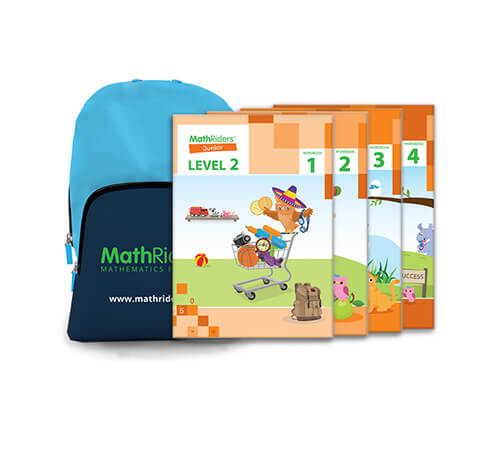
Учебни материали
Раница
4 Работни тетрадки
Helen Doron Stream

Ниво 3
7 до 8 Години
Все още ли смятате, че математиката е „твърде сериозен“ предмет за игра? В MathRiders Level 3 изучаваме числата и стойността на местата, 4 аритметични действия, геометрия, измерване и работа с данни, като играем различни настолни игри, четем математически истории и изпълняваме други творчески задачи. MathRiders доказва, че математиката е изключително подходяща за игра!
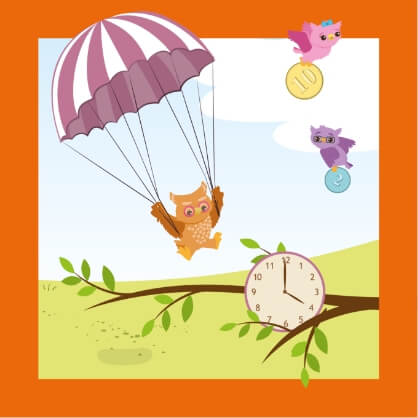

Ниво
2ра степен

Брой уроци
40 урока

Продължителност на урока
50-60 минути
Учебни материали
Раница
4 работни тетрадки
4 Подложки за домашна работа
Теми
- Стойност на мястото и връзки на числата до 100, трицифрени числа
- Вертикално събиране и изваждане, умножение и деление, ред на действията
- Преобразуване на мерни единици, решаване на текстови задачи с реални пари
- Понятие и свойства на многоъгълници, периметър и площ на равнинни фигури
- Представяне и интерпретиране на данни, организирани в стълбовидни диаграми, таблици, диаграми на Карол и др.
- и още…
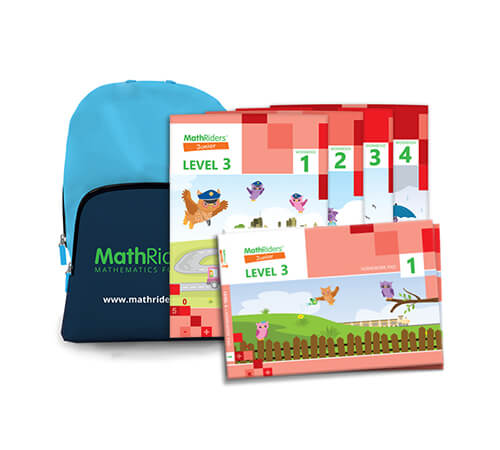
Учебни материали
Раница
4 работни тетрадки
4 Подложки за домашна работа

Ниво 4
8 до 9 години
Добре дошли в разнообразни математически приключения! Четирима математически детективи – главен детектив „Изчисляване“, детектив „Геометрия“, детектив „Мерки“ и детектив „Данни“ – ви канят да изследвате света на математиката заедно с тях. Дейностите се фокусират върху преподаването на принципите на математиката, като същевременно се отчитат нуждите, способностите, интересите, силните страни и интелигентността на всеки ученик. Бъдете готови за предизвикателство!
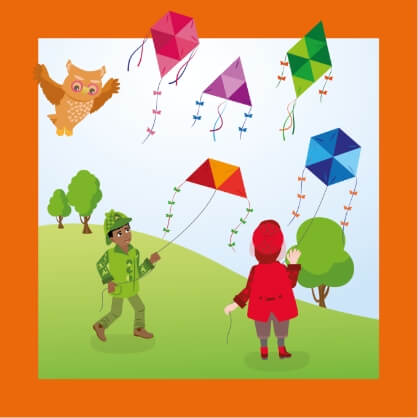

Ниво
3та степен

Брой уроци
40 lessons

Продължителност на урок
60 минути
Учебни материали
Раница
4 работни тетрадки
4 подложки за домашна работа
Теми
- Стойност на мястото и многоцифрени цели числа, дроби, отрицателни числа
- Многоцифрена аритметика, свойства на аритметичните действия, вертикално умножение
- Метрични единици за дължина, преобразуване
- Понятие за ъгъл и видове ъгли, четириъгълници, техните видове и свойства
- Изграждане и анализ на данни, представени в различни визуални форми
- и още…
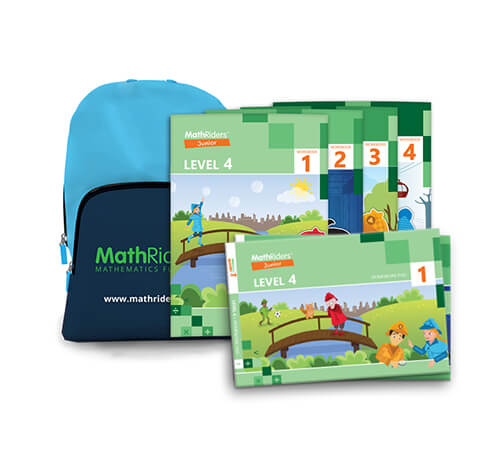
Учебни материали
Раница
4 работни тетрадки
4 подложки за домашна работа

Ниво 5
9 до 10 години
Всички родители търсят програми по математика, които са ефективни и могат да помогнат на децата им да напреднат в училище, но също така се надяват да намерят програма, която е окуражаваща, мотивираща и забавна. Учениците постигат успех от самото начало. Учителите използват всяка възможност, за да похвалят и насърчат всеки успех, независимо колко малък може да изглежда той. Това от своя страна допълнително мотивира ученика. Именно това прави MathRiders уникален!
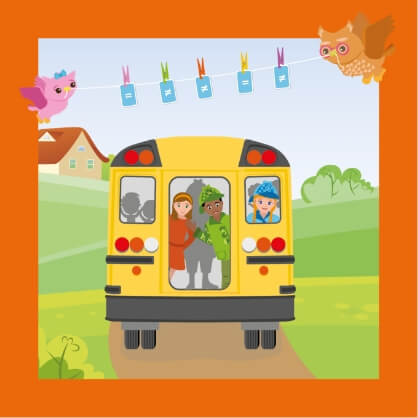

Ниво
4та степен

Брой уроци
48 урока

продължителност на урок
60 минути
Учебни материали
Раница
4 работни тетрадки
4 подложки за домашна работа
Topics
- Дроби и десетични дроби: сравняване, подреждане, преобразуване
- Дълго деление, понятие за сила, действия с дроби, понятие за съотношение
- Измерване на площта: мерни единици, мащаб на картата
- Линейна и ротационна симетрия, измерване на ъгли
- Основи на статистиката и вероятностите
- и още…

Учебни материали
Раница
4 работни тетрадки
4 подложки за домашна работа

Ниво 6
10 до 11 Години
Позитивното подсилване, съчетано с увлекателна атмосфера, осигурява оптимална среда за учене и преживяване на математиката по забавен и вълнуващ начин. Ето как учим математика с MathRiders Level 6! Мечтаният екип от детективи Изчисляване, Геометрия, Измерване и Данни помага на учениците да усетят вълнението и силата на притежаваните математически умения. Всеки ученик е победител!
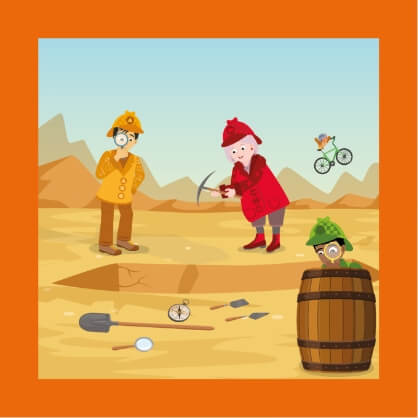

Ниво
5та степен

Брой уроци
40 урока

Продължителност на урок
60 минути
Учебни материали
Раница
4 работни тетрадки
4 подложки за домашна работа
Теми
- Отрицателни числа, прости и съставни числа, последователности
- Действия с дроби и десетични дроби, проценти
- Графични точки и координатна равнина
- Многостенни, повърхнина и обем на твърди фигури
- Статистика, вероятност и работа с данни, различни текстови задачи от реалния живот
- и още…
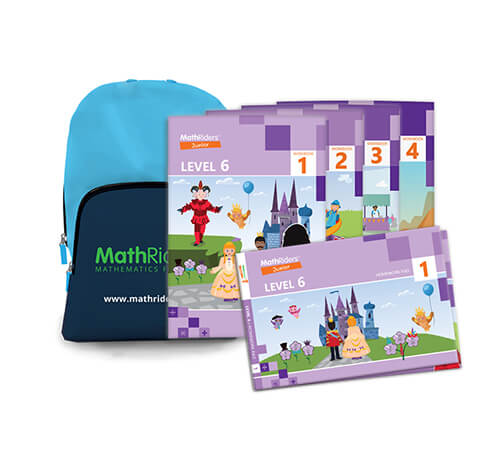
Учебни материали
Раница
4 работни тетрадки
4 подложки за домашна работа


